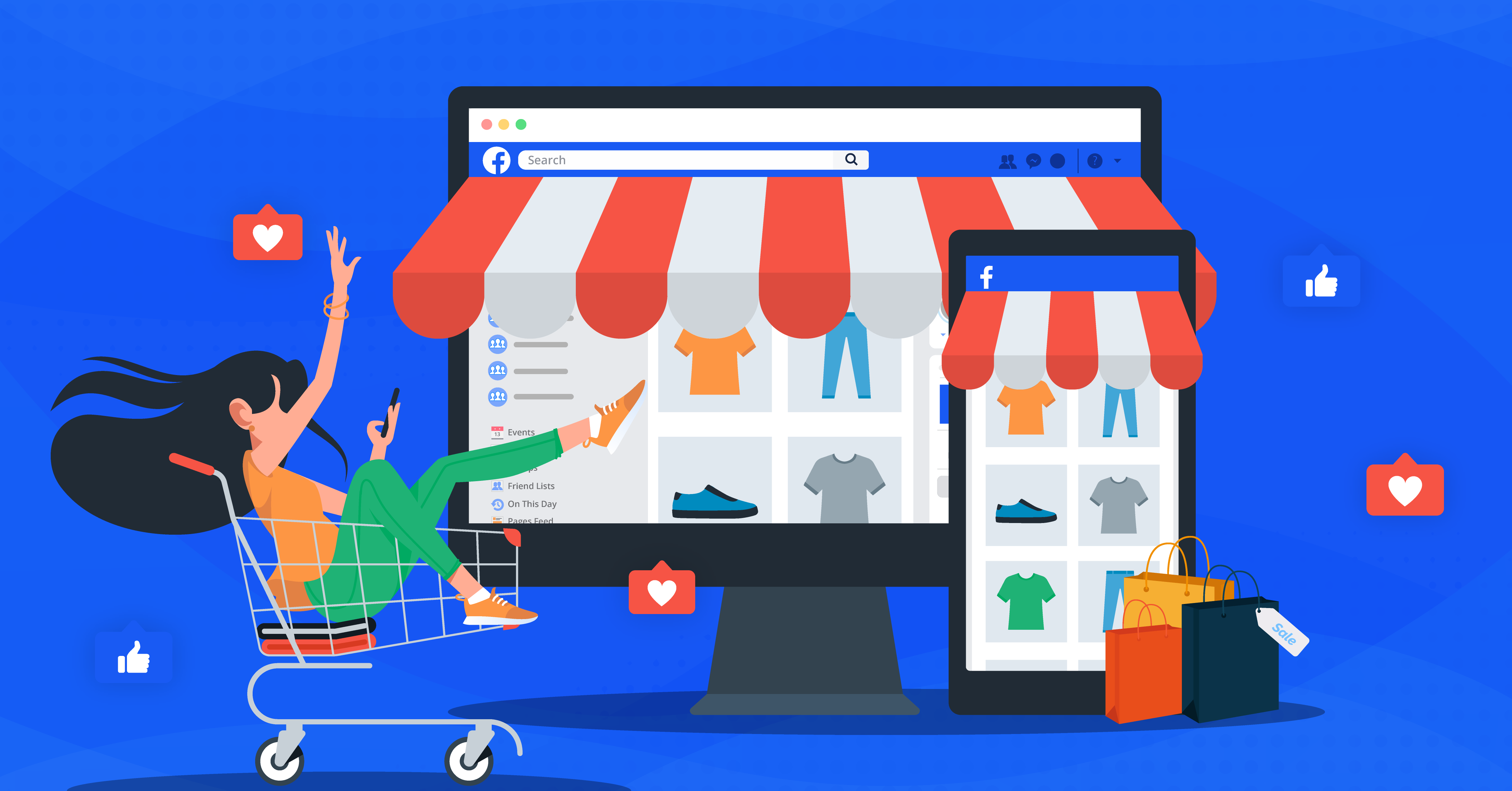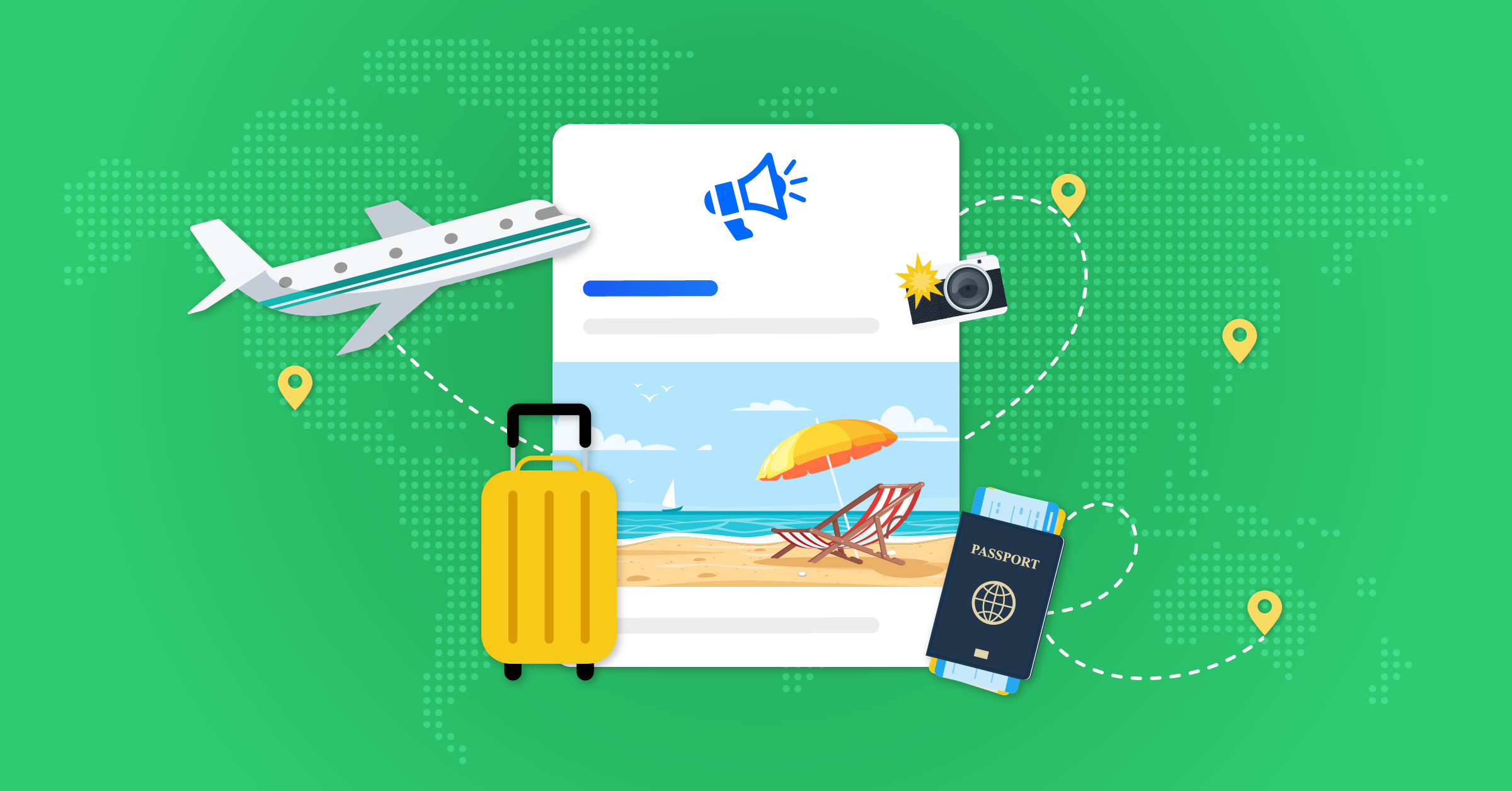
LinkedIn is not the cheapest ad platform. CPCs and CPMs are usually higher than Facebook, Instagram, or Google Display. But if you sell to professionals or B2B companies, it can be one of the most profitable channels you have.
To make it work, you need two things:
- A clear plan
- A solid understanding of how LinkedIn ads actually work
This article will discuss the process of creating LinkedIn ads by explaining what goes into the anatomy of a LinkedIn ad.
In addition, we’ll discuss strategies and tools that help turn your LinkedIn advertising into a lead generation machine, such as:
Anatomy of a LinkedIn ad: Types and formats
LinkedIn ads fall into four main buckets:
- Sponsored Content
- Sponsored Messaging
- Text and Dynamic Ads
- Lead Gen Forms
Each one fits a different stage of the funnel.
Take a look at some LinkedIn ad examples before moving any further.
1. Sponsored Content (native feed ads)
Sponsored Content is the “native” LinkedIn ad format. These are posts you promote into the feed, so they look like regular LinkedIn updates but with a “Promoted” label.
You can pay per click (CPC) or per 1,000 impressions (CPM) and optimize for goals like conversions, leads, or website visits.
What can you do with this format? You can run single-image, video, carousel, document, LinkedIn events, or thought-leader ads under this. For instance, use it if you are:
- Driving traffic to landing pages, product pages, or content
- Promoting webinars, events, or offers
- Retargeting people who have already engaged with you
It’s essential to use clear and high-contrast images or short videos optimized for the feed (1:1 or 4:5 aspect ratio).

Additionally, always match your CTAs to the stage of the funnel you are targeting (e.g., “Download guide” vs. “Book demo”). That alone will do wonders in terms of conversions.
2. Text ads
Text ads are simple ads that show on desktop in the right rail or at the top of the page. They’re cheap to test and easy to set up, and are much like classic search or display ads.

All you need is a short headline, a couple of lines of text, and a small image (optional). You link to a landing page or your LinkedIn Page.
It’s best for running campaigns that need:
- Low-cost brand awareness
- Simple retargeting to past site visitors or page engagers
- To be always-on and run in the background
Want a budget-friendly tip? Text ads make a great warmer for testing audiences and messaging before scaling with Sponsored Content.
Keep in mind that the image in this format is tiny (see text ad specs). So don’t rely on it to carry the message and let your copy do it instead.
3. Sponsored Messaging (Message & Conversation Ads)
Sponsored Messaging is a format for paid messages that show up directly in a user’s LinkedIn inbox. This includes:
Message Ads (single message)
A single, focused message with one main CTA (e.g., “Register”, “Book demo”). You pay per send.
Conversation Ads (multi-path)
A “choose your own path” message with multiple buttons and CTAs in one conversation. Better to use this when you have several offers or want to qualify a bunch of people.

LinkedIn shows your Sponsored Messaging only about once every 45 days, so you get a limited but strong shot at attention.
So, use them with care and for high-intent occasions such as sending:
- Direct invites to demos, trials, or events
- High-value offers for narrow, well-defined audiences
- Nurture flows where users self-select what they want (Conversation Ads)
It’s important to make your content sound like a personal message. And use a sender your audience will trust (e.g., sales lead, founder, or subject-matter expert).
4. Dynamic ads
Dynamic ads are personalized ads that pull in the viewer’s profile photo, name, job title, or company. They appear in the right rail and update automatically for each person who sees them.
Common formats include Follower Ads (which help grow your LinkedIn Page) and Spotlight Ads (to bring in traffic to a specific offer or page).
Use them to:
- Growing your company page followers
- Driving clicks to a key landing page (e.g., product launch, pricing page)
- Reminding warm audiences of a specific offer
If you pair Dynamic Ads with Sponsored Content using the same audience, you can build awareness with one, while the other pushes for clicks.
5. Lead Gen Forms
Lead Gen Forms aren’t a separate placement. They are an option that you can attach to Sponsored Content or Sponsored Messaging.
When someone clicks the CTA, a form opens inside LinkedIn, pre-filled with their profile data (name, email, company, job title, etc.).
This removes the need for a landing page and usually boosts completion rates, especially on mobile. For instance, you can collect data using lead gen forms when your campaigns are about:
- Webinar, event, or demo registrations
- Content downloads (eBooks, reports, templates)
- High-intent lead capture from warm audiences
Any lead form should be short. Three to five key fields tops.
Additionally, you need to download and sync your leads directly to your CRM or email platform for near-instant follow-up.
With a tool like LinkedIn Lead Gen Forms integration, you can push new leads into your CRM in real time and trigger nurture flows automatically.
LinkedIn ad elements: How to create an effective LinkedIn ad?
To create an effective LinkedIn ad, first pick one clear goal, such as leads, demo bookings, or event sign-ups, and build everything around that outcome.
Here are some LinkedIn strategies you need to incorporate into your advertising.
- Be ruthless about who you target so only real buyers see your ads.
- Learn how to write copy that fits LinkedIn’s fast, professional feed.
- Give people one obvious next step, not options.
- Treat every ad as a test, keep winners, and shut down the rest fast.
More on each strategy in just a few paragraphs.
How to create an ad on LinkedIn?
LinkedIn ads are not cheap. CPCs and CPMs are usually higher than Facebook, Instagram, or Google Display. This is especially true if you are targeting North America and Western Europe.
That’s because LinkedIn is built for B2B.
You can target people by job title, company, seniority, and more. But if your product has a high deal size or you sell to professionals, isn’t the higher cost still worth it?
LinkedIn is strongest in markets like the US, Canada, UK, Western Europe, and Australia, so it’s a good choice if you’re going after “Western” audiences.
How to create a LinkedIn ad? Below is the process, step by step.
Pre-step: Decide if LinkedIn ads are right for you
Use LinkedIn ads if:
- You sell B2B or to working professionals.
- Your customer lifetime value is high enough to justify higher CPCs.
- You need to reach specific roles (e.g., “VP Marketing at SaaS companies, 51–200 employees”).
However, it’s not a great option if you sell low-priced B2C products, or your audience isn’t easily found on LinkedIn.
Once you’re sure that running ads on LinkedIn makes sense, proceed to set up.
Step 1: Create a campaign group
- Go to LinkedIn Campaign Manager from your company page or business account.
- Choose or create the ad account you want to use.
- Click Create and then Campaign group.
- Give the campaign group a clear internal name, for example: US – SaaS – Demand Gen – Q1 2026.
A campaign group is just a folder that holds multiple campaigns.
LinkedIn gives you many campaign groups per account, so use them to control your campaign status, schedule, and sometimes shared budgets.
Step 2: Create a campaign and choose your goal
Inside your campaign group:
- Click Create and then select Campaign.
- LinkedIn will ask for a campaign objective. These match the 3 stages of the funnel: awareness, consideration, and conversions.
The main objectives you can pick are:
Here are some questions to ask yourself if you want to get clarity on your objectives:
- Are you targeting new markets or cold audiences? Use brand awareness.
- Have you created a campaign for mid-funnel content and nurturing? Use Website visits or Engagement.
- Are you ready to collect leads or push trials or demos? Use Lead generation or Website conversions.
- Are you hiring and want to reach very specific roles? Use Job applicants.
Pick the objective that matches the one main action you want. Don’t try to “do everything” in one campaign. That way, you‘ll end up paying more and learning less.
Step 3: Set up your audience
Now you define who sees your ads. This is where LinkedIn really earns its price tag.
- Start with location. This one is required. Pick countries, regions, or cities where your buyers actually are.
- Add audience attributes, such as:
- Company name, industry, and company size
- Job title, job function, seniority
- Education, field of study, degrees
- Years of experience
- Member skills and interests
- Member groups
- Use include and exclude logic to shape the audience. For example:
- Include: Industry = Software, Company size = 51–200, Job function = Marketing
- Exclude: Job seniority = Entry or Students if you don’t sell to juniors.
- Check the Estimated audience size in the sidebar. Aim for something like 30k–300k people for most B2B campaigns. If it’s under 10k, you may be too narrow; if it’s in the millions, you’re probably too broad.
Implement precise targeting with Matched Audiences
On top of native filters, LinkedIn lets you build Matched Audiences, so you can:
- Retarget website visitors.
- Upload company lists or contact lists from your CRM.
- Build lookalike audiences based on your best customers.
With LeadsBridge, you can sync CRM segments, email lists, or customer data to LinkedIn automatically. That means:
- No manual CSV uploads.
- Always-fresh audiences based on real-time data.
- Cleaner retargeting and exclusion (e.g., exclude “Closed Won” from prospecting).
Discover all you need to know about Matched Audiences.
Creating LinkedIn ads: How to write a LinkedIn ad?
Your ad creative is what makes or breaks your campaign. LinkedIn is busy and expensive, so your message has to be sharp.
1. Get clear on your offer and audience
Before you write anything, list out:
- Who are you targeting (role, industry, company size)?
- What’s their main pain or goal?
- What’s that one offer you’re pushing (demo, report, webinar, job, etc.)?
- Why is your solution different or better?
Keep this in a short doc and use it for every headline and body text.
2. Write a focused headline
- Aim for 5–10 strong words over a paragraph.
- Lead with the outcome instead of your company:
“Cut churn by 20% in 90 days,” as opposed to “Customer success platform.” - Add numbers or specifics where you can.
The headline should tell people at a glance if the ad is for them.
3. Write body text that sells the click
Even though you have a lot to say, try to keep your ad simple:
- 1–2 short lines on the benefit (“See how teams like yours…”).
- 1 quick line of proof (customers, results, niche).
- 1 clear CTA (Book a demo, Download the report, Apply now).
Use plain language and short sentences. LinkedIn users are scanning, not studying.
4. Match copy to the format
- Feed ads (Sponsored Content): Front-load the hook in the first 2 lines before the “see more” cut.
- Message / Conversation Ads: Make it sound like a real person talking, not a brochure. One offer per message.
For each ad, try at least three to five headline and body combinations. Pause losers fast and move the budget into the winners.
Creating LinkedIn ads: Set the budget and schedule
Figuring out your ad costs is a moving target. Set your daily or lifetime budget, choose start and end dates, and let LinkedIn estimate expected results.
Start with a modest test budget so you don’t overspend while learning.
Choose how you pay:
- CPC for clicks
- CPM for impressions
- CPS for Sponsored Messaging
- CPV for video
Use automated bidding, then tighten bids once you know your usual CPC or cost per lead.
Creating LinkedIn ads: Launch and optimize
The final step is to launch the LinkedIn ad after setting it up.
Upload your creatives, double-check targeting, budget, URLs, and payment details, then launch.
LinkedIn reviews each ad before it runs, which may take up to 24 hours. Once live, watch impressions, CTR, and cost closely.
Always keep an eye on the numbers so you can pause underperforming ads, shift budget to top-performing ads, and adjust targeting or bids as needed.
How to automate advertising on LinkedIn?
Running LinkedIn ads by hand works at a small scale. Once you have more than a couple of campaigns, manual work will not cut it:
- You forget to download leads.
- Sales gets them late.
- Audiences go stale.
- You waste budget showing ads to people who have already converted.
This is where automation comes in, and where an official LinkedIn partner like LeadsBridge is useful.
LeadsBridge is an automation and integration platform built to connect ad platforms like LinkedIn, Meta, Google, and TikTok with CRMs, email tools, and other systems.
Here’s how to automate your LinkedIn ads stack.
Pre-step:
Make sure to create your free LeadsBridge account. This gives you access to your personal dashboard, where you can create and manage your bridges.
Step 1: Automate LinkedIn Lead Gen Forms sync to CRM
Connect LinkedIn Lead Gen Forms directly to your CRM, email, or helpdesk in real time:
- In LeadsBridge, create a new “bridge”.
- Choose LinkedIn Lead Gen Forms as the source and your CRM / email tool as the destination.
- Connect your LinkedIn ad account and pick the exact form used in your campaigns.
- Map fields from LinkedIn (name, email, company, job title, custom questions) to fields in your CRM.
- Turn the bridge on.
From now on, every new lead flows into your CRM or list in real time. Then, your sales and marketing can trigger instant follow-ups (emails, tasks, calls) while the lead is still warm.
Here’s how to connect your LinkedIn account to Salesforce automatically.
This click-and-set-up workflow is essentially the same for all the bridges you can create.
Step 2: Automate audience sync with LinkedIn Matched Audiences
Your best audiences change over time. New customers, churned accounts, active opportunities, etc.
LeadsBridge connects your CRM or other tools to LinkedIn Matched Audiences, so you can automatically upload and refresh contact lists and company lists.
You can also build audiences based on pipeline stages (e.g., “Open Deals”, “Lost”, “Customers”).
Typical setups:
- Retargeting: Sync “All MQLs” or “Visited pricing page” to LinkedIn to show them lead gen or demo ads.
- Exclusions: Sync “Customers” or “Closed Won” to LinkedIn to exclude them from prospecting campaigns.
- Upsell and cross-sell: Sync “Active customers – product A” to show them campaigns for product B.
Because LeadsBridge can connect LinkedIn to hundreds of tools and CRMs (HubSpot, Salesforce, Mailchimp, Zoho, Pipedrive, Google Sheets, and more), you get to build audiences from almost any system you use.
Step 3: Connect LinkedIn to the rest of your funnel
Once leads and audiences are syncing, you can stitch LinkedIn into a full omnichannel flow.
With LeadsBridge, you can:
- Trigger email sequences as soon as a LinkedIn lead is created.
- Create tasks or deals in your CRM for salespeople automatically.
Sync LinkedIn leads to your CRM or email marketing platform, to match how your team works day to day.
Step 4: Standardize your setup and track
To get real leverage from automation, make it part of how you run campaigns.
Tracking your LinkedIn campaigns is crucial to see what actually works.
And conversion tracking integrations can help by sending all your ad and lead data into your CRM automatically so you can measure results and improve faster.
Additionally, combine data from multiple ad platforms (Meta, Google, TikTok, LinkedIn) into the same CRM fields for your reporting and better lead scoring.
Final thoughts
LinkedIn is a real treasure trove for audience targeting. You can only show ads to targeted people, which simultaneously helps you attract high-quality and high-conversion traffic.
Advertising costs vary greatly depending on the type of campaign. When you create a robust automation system that connects LinkedIn to the rest of your marketing stack, you can see the true impact of your campaigns inside your CRM.
Explore all the available integrations by LeadsBridge right now!




























